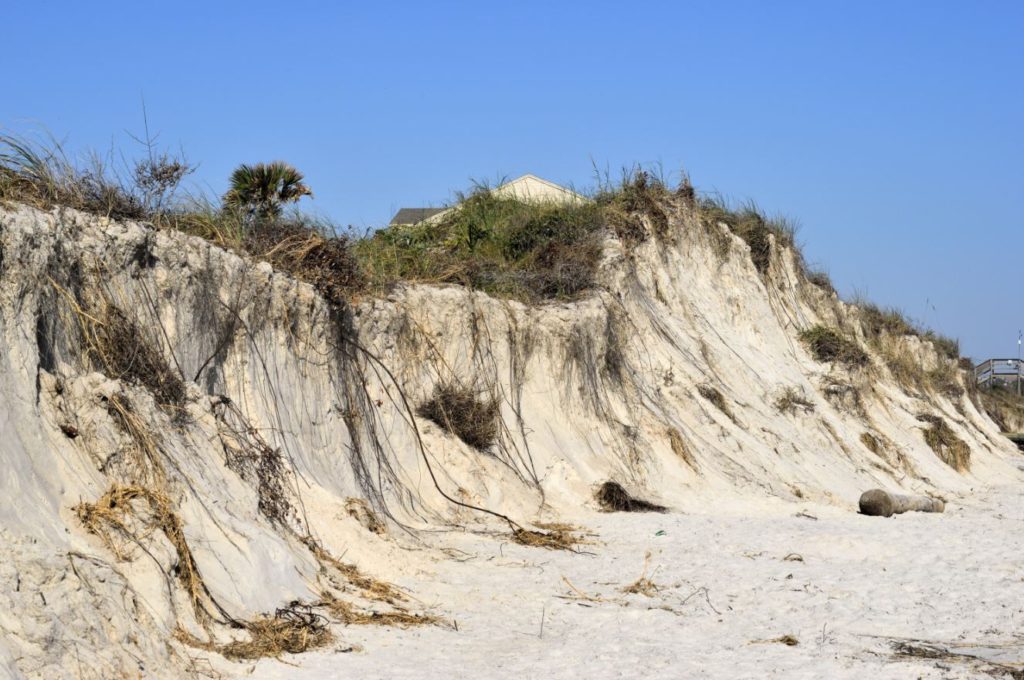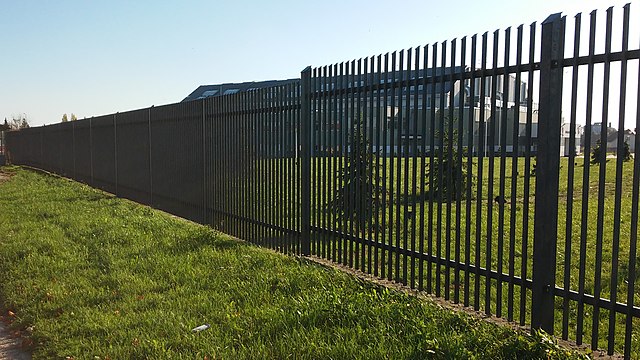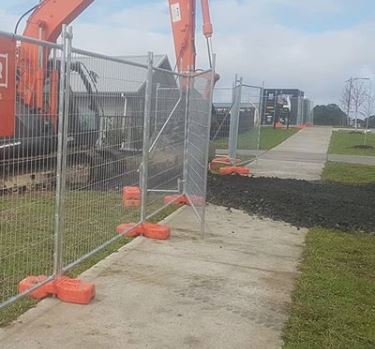Grasses, trees, and shrubs are vegetation that plays a crucial role in slope stabilization. Vegetation helps stabilize slopes and prevent erosion by strengthening roots and modifying the saturated soil regime.
Research shows that plant roots anchor through the soil and crosses weakened zones to more stable soil, providing interlocking and long fibrous binders within a soil mass. Plants use their root system to bind the soil and provides a protective layer that prevents erosion in different ways.
Experts argue that construction equipment can kill vegetation, leading to soil erosion. Vegetation provides a solid root system that holds soil in place, leading to reduced risks of erosion and slope destabilization.

Besides, roots can hold the soil in position, making it challenging for soil to wash away. In today’s article, we will discuss the role of vegetation in slope stabilization and erosion prevention. Read on!
How Does Vegetation Help?
Low organic matter, soil compaction, poor internal drainage, and loss of soil structure are a few reasons that lead to soil destabilization, slopes, and erosion. The soil erosion process accelerates due to soil acidity and salinization. Vegetation helps stabilize slopes and prevent erosion in different ways. Plants adapt to the local weather, native soil, and horology.
Interception
Dislodging of soil particles due to rainfall leads to erosion. It carries soil particles off a slope, leading to the formation of gullies and rills. Raindrops hitting the surface seal the soil particles, make a crust, and create runoff due to infiltration prevention.
On the other hand, vegetation intercepts precipitation before raindrops hit the ground or soil surface because they evaporate into the atmosphere. A growing body of research evidence shows that moisture dripping off the vegetation, including trees, shrubs, and plants, causes no or little damage to the soil. Therefore, we recommend including trees in slope plantings because they can intercept moisture, especially in the rainy season.
Dewatering
Soil saturation is one of the leading causes of erosion, making it challenging for construction companies to build a building. Vegetation removes water from the soil and improves slope stability. Because plants use water, they absorb moisture through their roots, triggering photosynthesis, an important metabolic process that benefits plants and construction site ground.
Similarly, trees, shrubs, etc., release moisture or water into the atmosphere through pores transpiration on the leaves. Transpiration is an essential process that cools the plants and streamlines mineral transportation. Bear in mind that a single tree transpires hundreds of gallons on a dry or hot day.
Soil Reinforcement
Plant roots reinforce soil, increase water filtration, and resist erosion. Roots from little tunnels, also known as physical pathways, support water to infiltrate the soil. Besides, vegetation with deep roots locks the soil layers, and lateral roots create an interlocking grid of many plants.
Moreover, fine feeder roots create a network through the soil and prevent surface erosion. Grasses and groundcovers have low biomass and shallow roots, meaning they don’t stabilize deep soil. However, they prevent surface erosion.
Deep roots can penetrate a compacted network of layers to prevent slides. Tree roots at the slope’s crest and toe prevent wasting in susceptible areas. Bear in mind that selective pruning allows the wind to blow through the vegetation, leading to load reduction on the soil and improving slope stability.
How to Stabilize Slopes through Vegetation?
Tops of slopes are drier because water moves downhill instead of absorbing into the soil. We recommend using plants that survive irrigation because soil can erode from slopes saturated with water. We recommend studying different slope areas to analyze variance between moisture and light levels.
Experts recommend using different native shrubs, grasses, and perennials to protect the slope. When you use varying plants of varying root systems’ depth, they will stabilize more area of the slope. Avoid planting big trees with shallow roots or heavy canopies to reduce the risk of toppling. Instead, use small trees if you want to plant trees on the construction site.
How do forests prevent soil erosion?
Forests play an essential role in preventing soil erosion. They act as a protective shield for soil by absorbing rainfall, slowing the flow of water, and keeping it from washing away valuable topsoil. Below are some ways that forests prevent soil erosion:
- Root Systems: Forests have extensive root systems that help hold the soil in place. The roots of trees and plants penetrate deep into the soil, keeping the soil from moving during rainfall or strong winds.
- Ground Cover: The leaves and other forest debris create a ground cover that protects soil from the impact of rainfall. This ground cover helps absorb rainwater, which then seeps slowly into the soil, rather than running off and causing erosion. And why planting trees is so important to our environment.
- Slope Stabilization: Forests are often found on steep slopes, and the trees and underbrush help to stabilize the soil by reducing the flow of water and stabilizing the soil structure. This is one of the ways trees minimize soil erosion.
- Soil Formation: Trees and plants help create soil by providing the nutrients needed for healthy soil and by breaking down dead plant material. The resulting soil is richer in organic matter, which helps it retain water and resist erosion.
- Reduced Runoff: A forest canopy can intercept up to 80% of rainfall, reducing the amount of water that reaches the forest floor. This reduces the potential for soil erosion and helps maintain healthy soil conditions.
Overall, forests are a natural solution to soil erosion, and their conservation and proper stewardship are essential to maintaining healthy soil and productive landscapes.
How do plants prevent erosion?
Plants play a critical role in preventing soil erosion by helping to hold the soil in place and regulate water flow. Here are some ways that plants help prevent erosion:
- Root Systems: Plants anchor the soil with their roots, holding it in place and making it more resistant to erosion caused by wind or water.
- Canopy and Ground Cover: A plant’s leaves and branches above the ground provide canopy cover, which intercepts rainfall, providing ground cover that both slows the rate of rainfall and prevents soil splash. This cover helps to absorb the rainfall and distribute it more evenly on the ground, which reduces runoff and minimize the impact of rainfall on the soil.
- Nutrient Supply: Plants provide nutrients to the soil, which help to improve soil structure and increase its resistance to erosion.
- Reduction of Runoff: Plants reduce runoff as the leaves and surface below the plant work as a sponge to absorb and slow the water flow rate. This allows more water, and associated sediments and nutrients, to infiltrate the soil, which reduces the potential for erosion.
- Soil Maintenance: Plants also promote healthy soil structure by contributing organic matter to the soil through their fallen leaves and contributing to healthy soil microbiology.
In combination, these factors help to keep the soil in place, reduce soil loss and maintain healthy soil ecosystems.
Final Thoughts About How Vegetation Helps Stabilize Slopes and Prevent Erosion
At Eastcoast Sitework, we understand the significant economic and environmental consequences of de-stabilized slopes and erosion at construction sites. These issues can lead to water quality degradation in drainage systems and surface water, resulting in increased sediment and nutrient levels.
One effective solution for addressing these concerns is the use of plants to reduce weathering and promote slope stabilization. Vegetation plays a critical role in actively de-compacting soil by expanding root systems and introducing organic matter to the construction site.
Some of the best trees for slope stabilization include shade trees, fruit trees, and evergreen trees, while deep-rooted grasses and other plants stabilizing slopes offer additional support for erosion control. Grass slope stabilization techniques can further enhance the resilience of your construction site against the elements.
Research indicates that de-compacted soil absorbs water more efficiently, making vegetation an essential component for fostering a thriving ecosystem of soil fauna. This includes microbes, worms, and insects, which condition the ground and contribute to a healthier, more resilient construction site, particularly during stormy events.
When selecting the best trees and plants for your project, consider factors such as plant hardiness zones, ensuring that your choices are well-suited for the local climate. Additionally, opt for species with very fragrant flowers, adding both aesthetic and functional value to your site.
At Eastcoast Sitework, we specialize in providing comprehensive erosion control solutions tailored to your specific needs. Our team of experts can help you identify the most suitable shade trees, fruit trees, evergreen trees, and deep-rooted grasses for erosion control, ensuring that your construction site is prepared for success.
Additional Resources
- Why choose hydroseeding to establish a lawn instead of sod or dry grass seeding?
- This is a great article about What is Soil Stabilization in Road Construction
- Here is an article that covers Types of Soil Erosion and Mitigation Strategies



